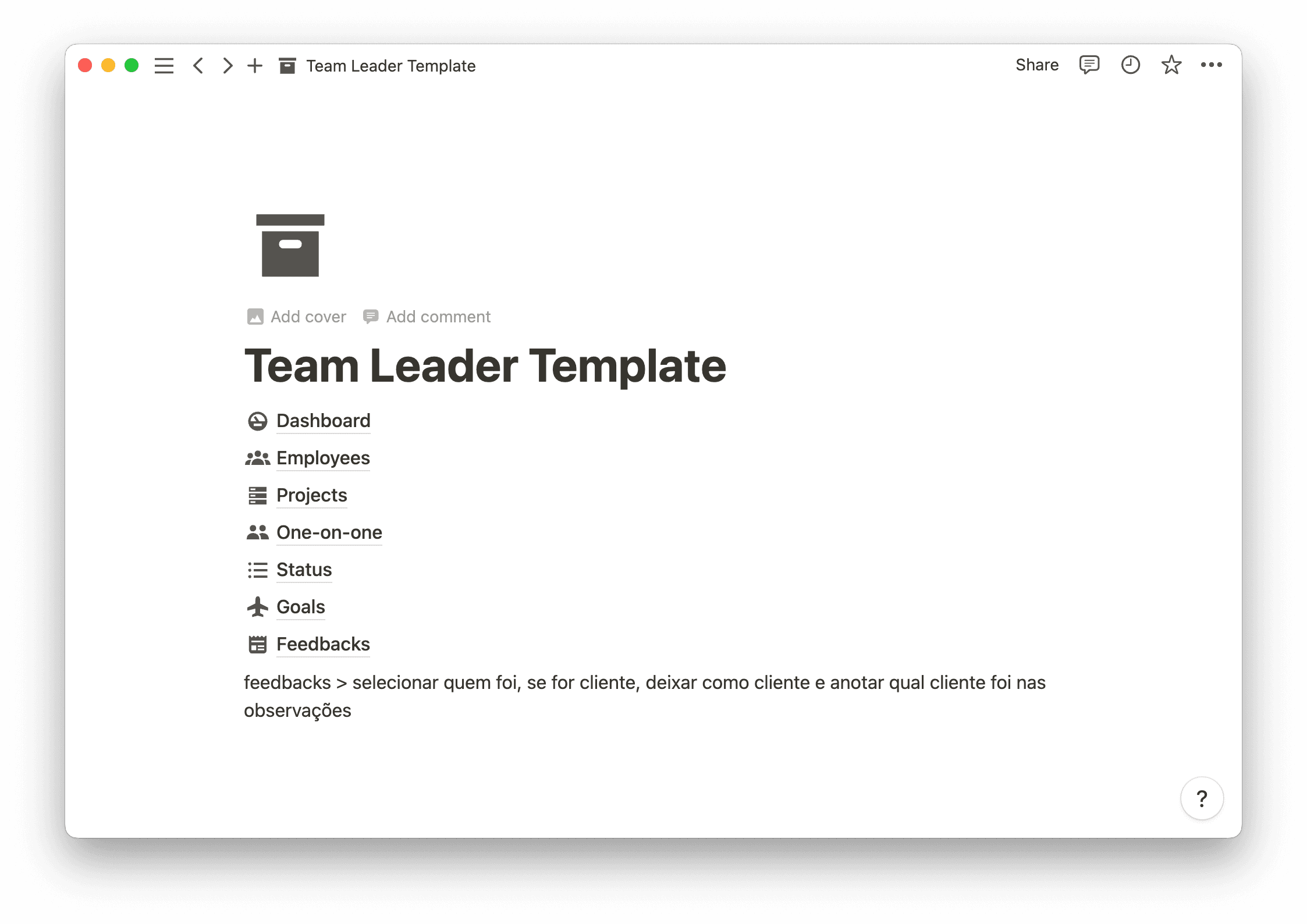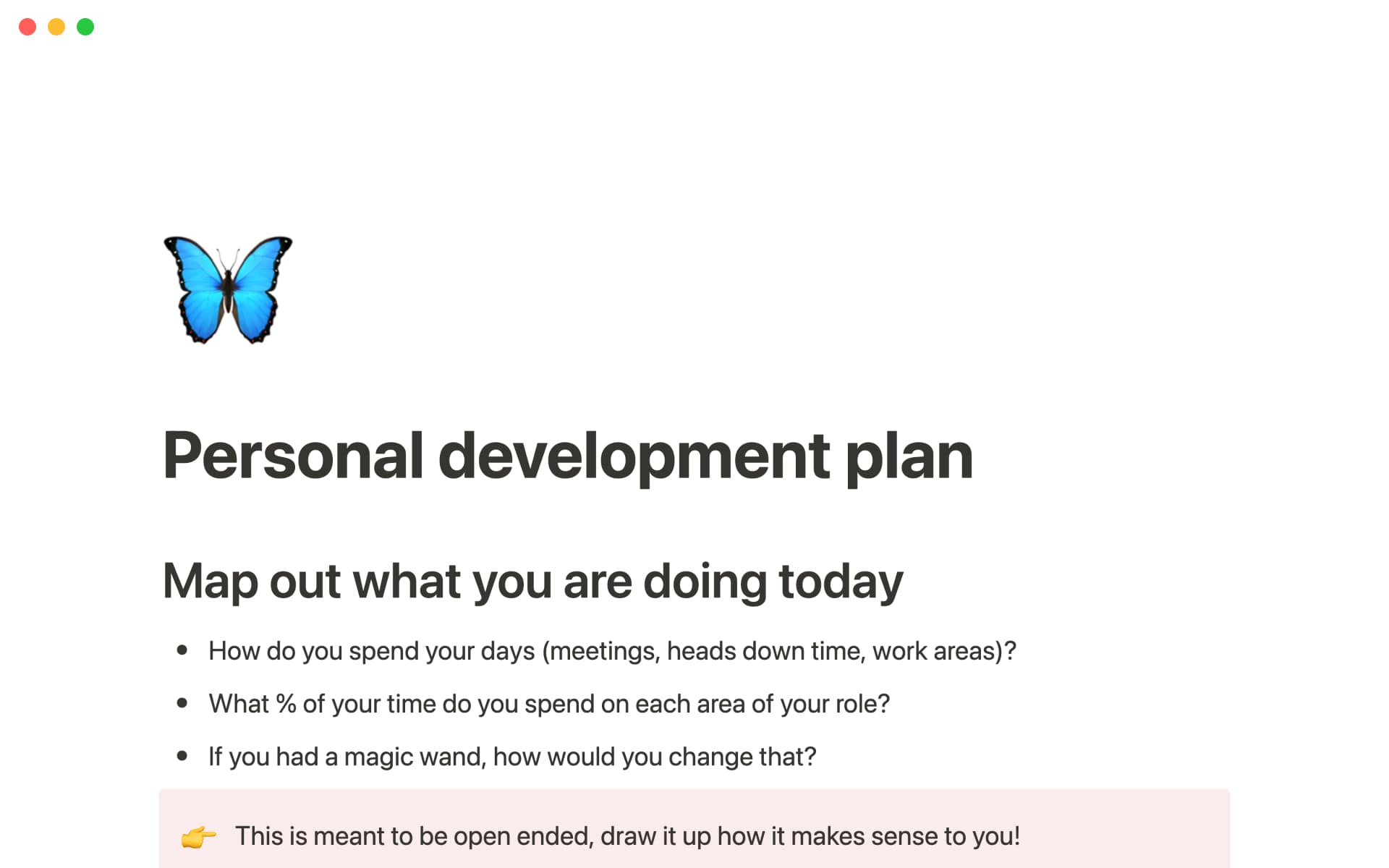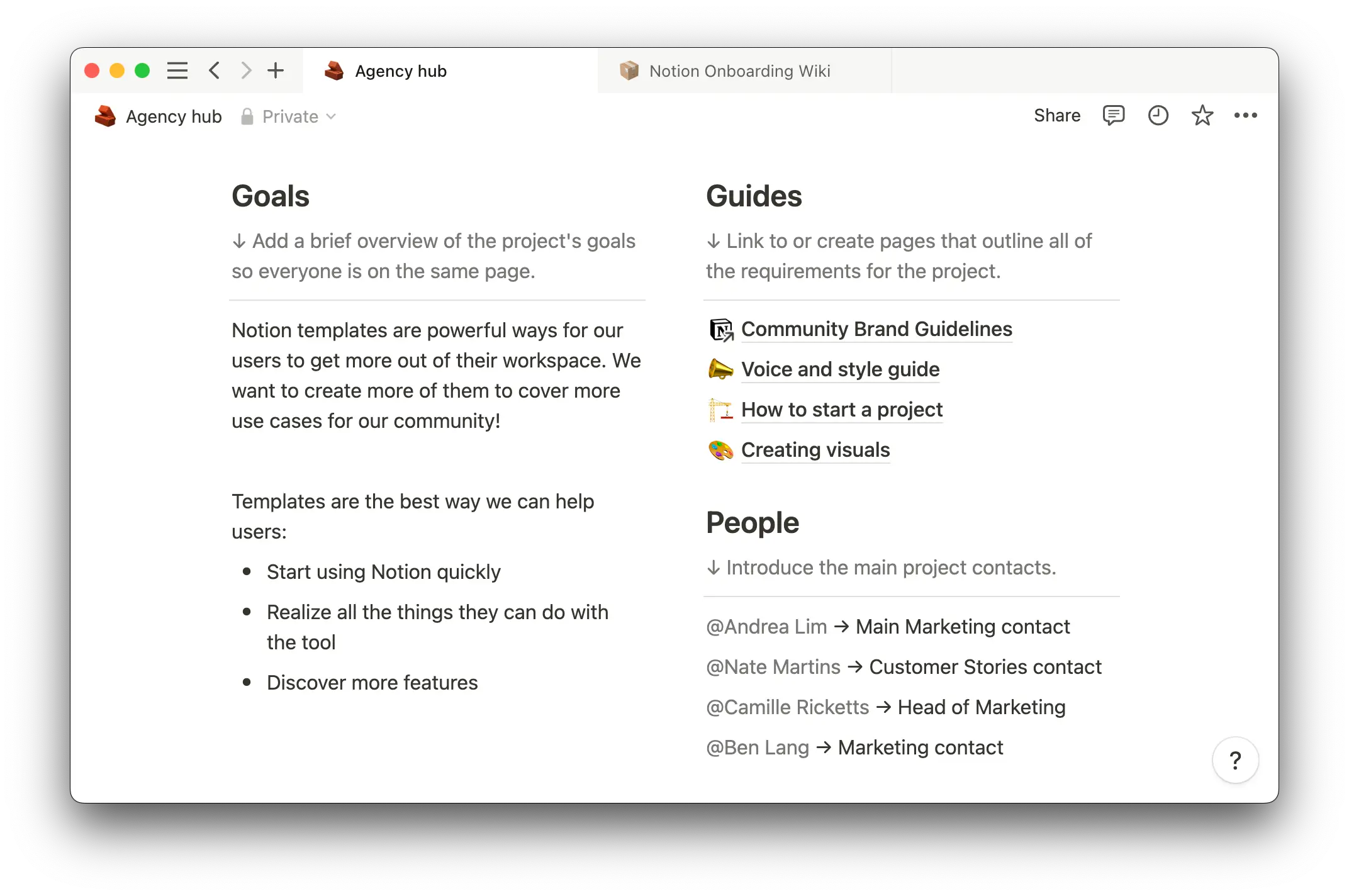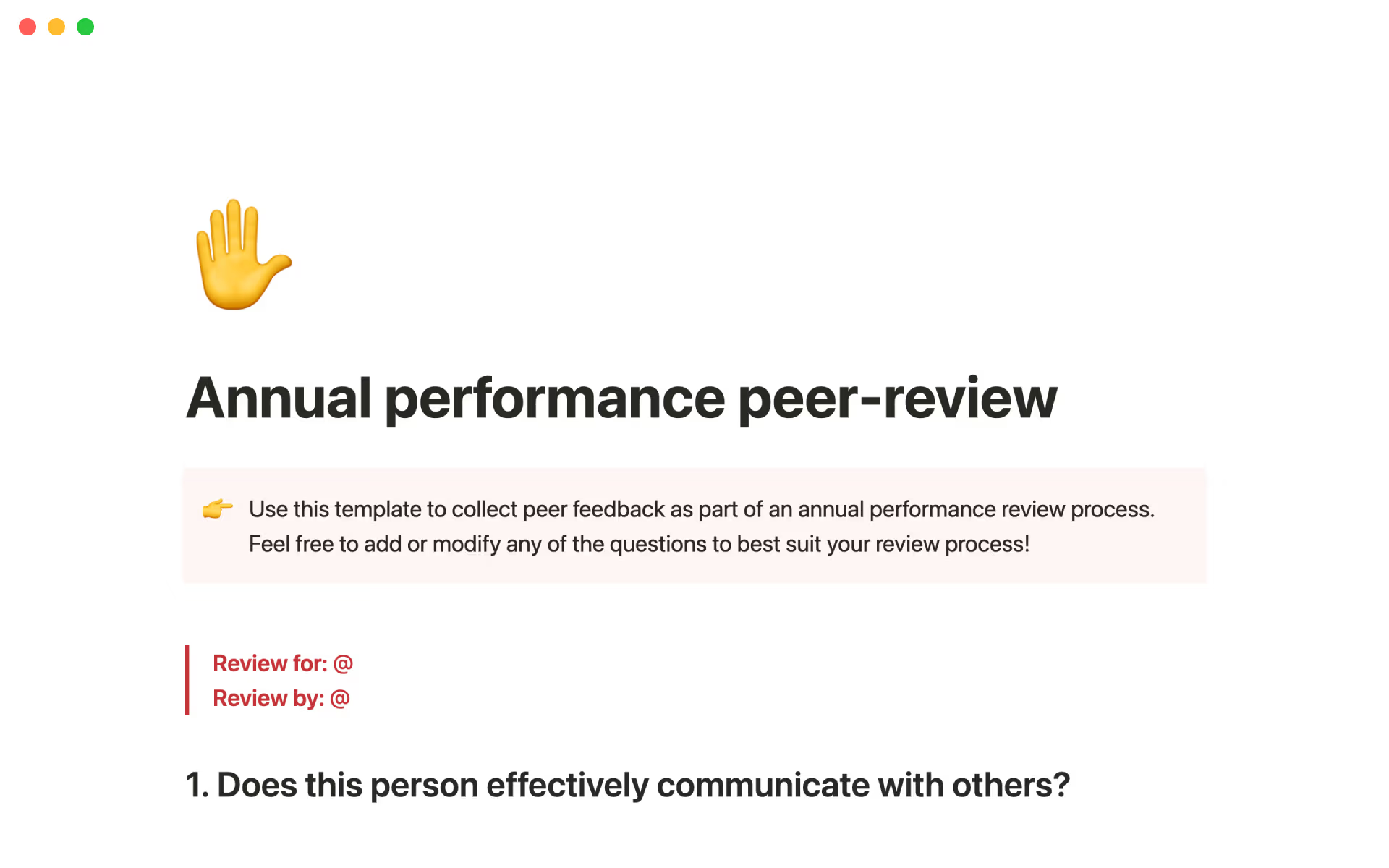There’s no such thing as too much knowledge.
Regardless of your position or years of experience, the professional world constantly evolves, with new technologies and trends emerging each year.
That means that your professional development never ends — you can always shift your focus to a new area that needs improvement.
Whether you're a freelancer or a corporate executive, writing a professional development plan keeps you ambitious and moving forward, looking for new areas to upskill or improve your productivity. And using professional development plan templates takes the legwork out of deciding what information you need to organize to start improving, so you can focus on just doing it.
What to include in a development plan
When crafting a development plan, think about your desired outcomes. Whether you’re an individual hoping to take your professional growth into your own hands or a manager looking to stoke engagement, there are many areas you could focus your efforts. You may want to participate in leadership training or think a coding course would take your technical skills to the next level.
Start by including these five components, then add more sections as necessary.
1. Goals
Each professional goal outlined in the career development plan should fit into the SMART framework to ensure it’s realistic:
Specific — the goals should be well-defined and clear to the employee.
Measurable — you want to be able to track the progress and measure the outcomes.
Achievable — keep the goals realistic and attainable within the desired timeframe.
Relevant — decide how goals fit into long-term objectives, ambitions, or dreams.
Time-bound — create a timeline with precise due dates and milestones.
2. Objectives
Objectives are the actions you must take to achieve your goals. If a marketing specialist aims to increase lead generation by 10%, an objective would be to earn a certification in social media advertising to support their progress.
If you’re hoping your development will lead to a promotion, try to align your objectives with organizational goals to prove that you’re thinking of your future at the company.
3. Employee overview
An employee overview represents you or your report’s current state, including:
Employee engagement
Performance
Skills
Strengths
Areas for improvement
Potential for growth
4. Action plan
The action plan details the actual steps needed to accomplish the outlined objectives. It includes:
A clear list of actionable tasks
The timeline for completing each task
Resources required
A mentor, if available
Measurable outcomes or criteria for success
Writing the action plan is often a collaborative effort between the employee and their manager. Managers have valuable insights into opportunities at the company or areas their reports should focus on improving, while employees know what they want to achieve and what level of ambition feels realistic.
If you’re writing your own plan, consider asking your manager or a trusted colleague to act as your accountability partner to keep you on track while you progress.
5. Evaluation and assessment
Make a clear work plan to track progress by collecting relevant data, regularly assessing performance, and scheduling routine check-ins. Be prepared to make adjustments to the plan over time if circumstances or a team member’s goals change.
The 6 best templates for personal and professional development
Whether you’re a manager looking for templates to help your team grow or a professional seeking to advance your career, there’s a template to help you reach your goals. These templates are available in all forms, from classic Word docs to SlideTeam PowerPoint outlines.
These are six of the best professional development plan templates to help guide career goals, track progress, and elevate your performance. Their use cases vary from meeting immediate professional needs to succession planning and preparing employees for future roles and responsibilities within the organization.
1. Personal development plan
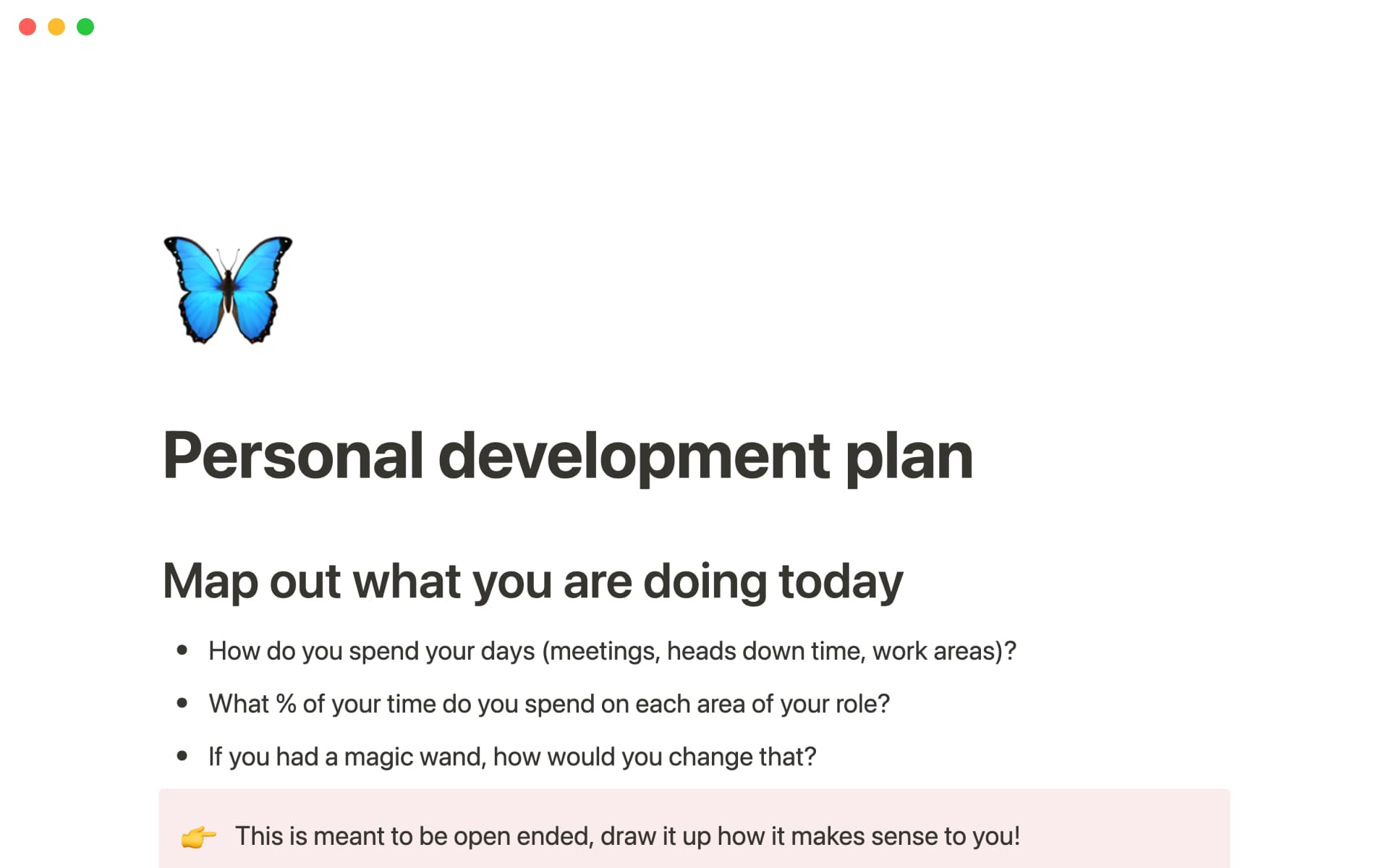
This personal development plan is for busy professionals looking to build a roadmap for growth. It provides a simple outline for a personal development plan for work, starting with a reflection to organize your thoughts and determine:
Where are you currently?
Where do you want to go?
What are you going to do to get there?
The template includes sections to detail your action plan and a monthly check-in so you remember to take time for reflection. And you can customize the sections to fit your specific thought process, whether that means adding a journal, checklist, or table with to-dos.
2. Individual development plan
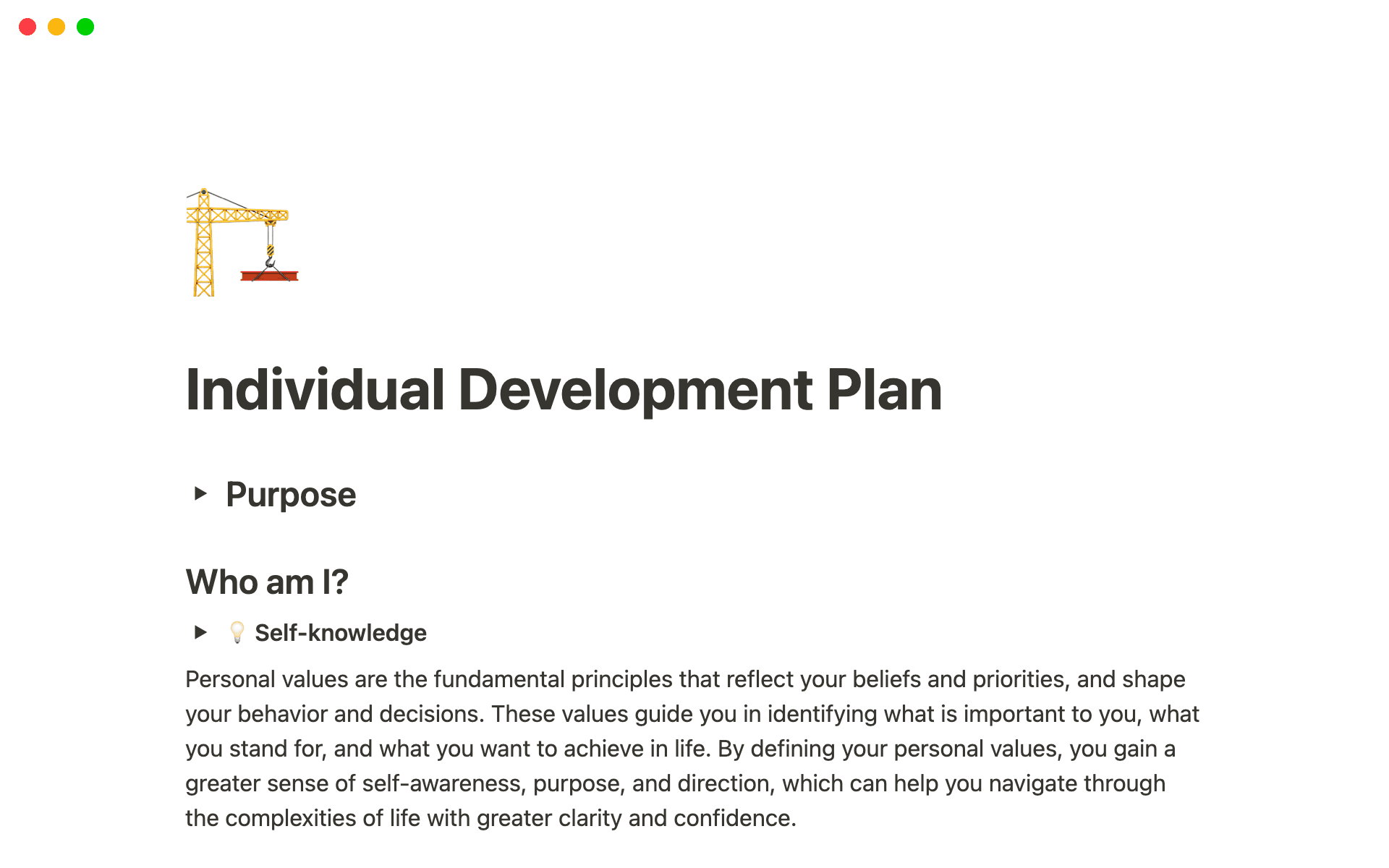
This individual development plan (IDP) template helps you decide where you’re going with a personal SWOT analysis, first asking, “Who am I?” and “What are my values?” before asking, “Where do I want to go?”
After several sections for self-reflection, you fill out the objectives required to reach your professional goals. You can create custom checklists to maintain accountability, update regularly, and view a holistic overview of your plan. The template also comes preloaded with a section to track any upskilling opportunities, like hackathons, forums, and lectures.
3. Personal growth plan
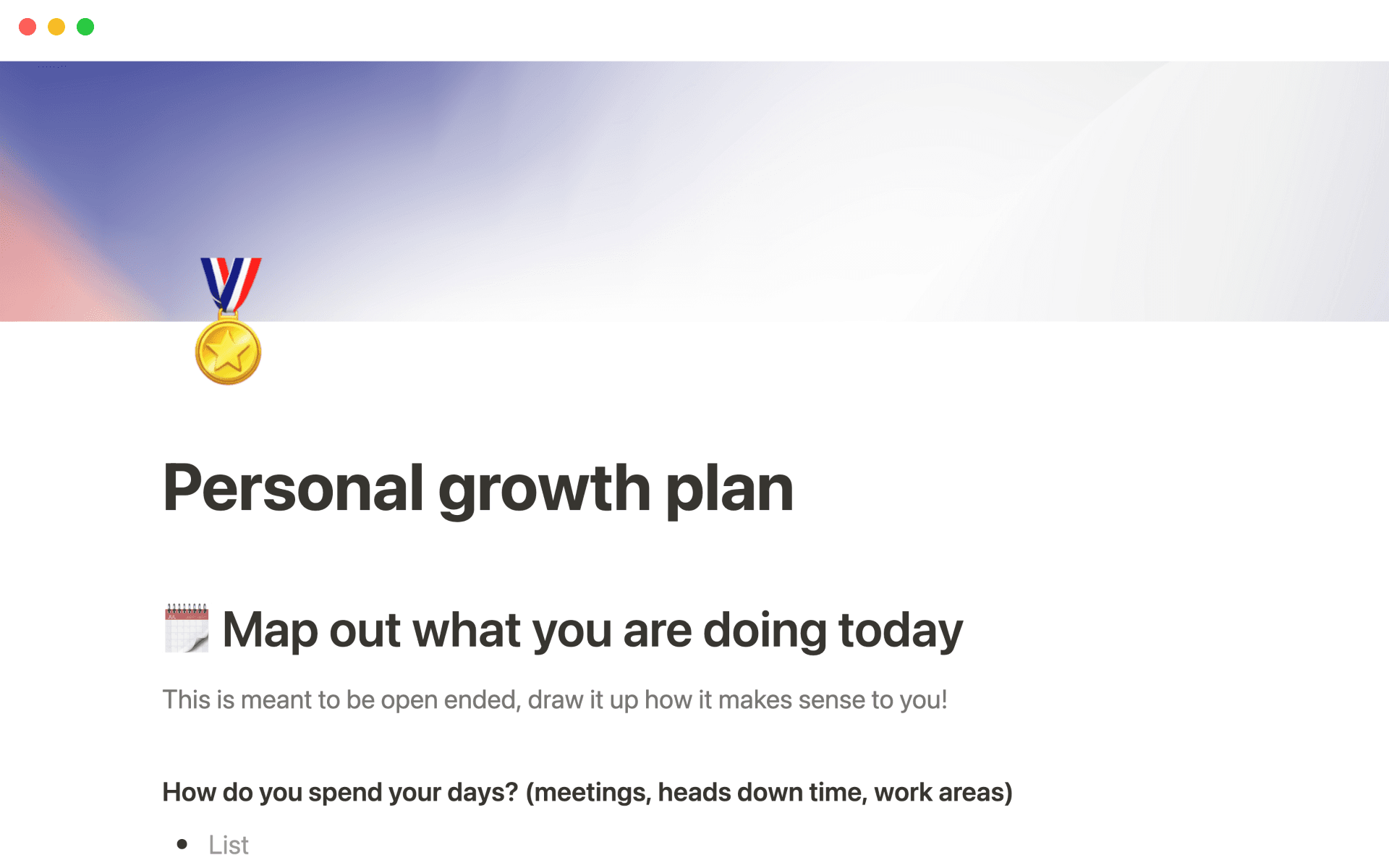
The personal growth plan template encourages you to consider your current state and where you want to grow, including what you want your brand to be. Then, it walks you through the elements of your work that will help you leave the impression you envision.
It may help to conduct a GAP analysis or create a vision board when filling out this template to better understand your long-term career goals. By the time you reach the action plan, you’ll have considered what energizes you, what you’d like to learn, and where you see your career going in the next few years. After all that reflection, deciding the first steps of your plan should be a breeze.
For managers, you can provide this growth plan for employees to encourage them to think about their careers and what they want their next step to be. They'll appreciate your interest in their career, and the time for reflection can help them figure out what parts of their current role they do or don’t enjoy.
4. Annual performance self-review
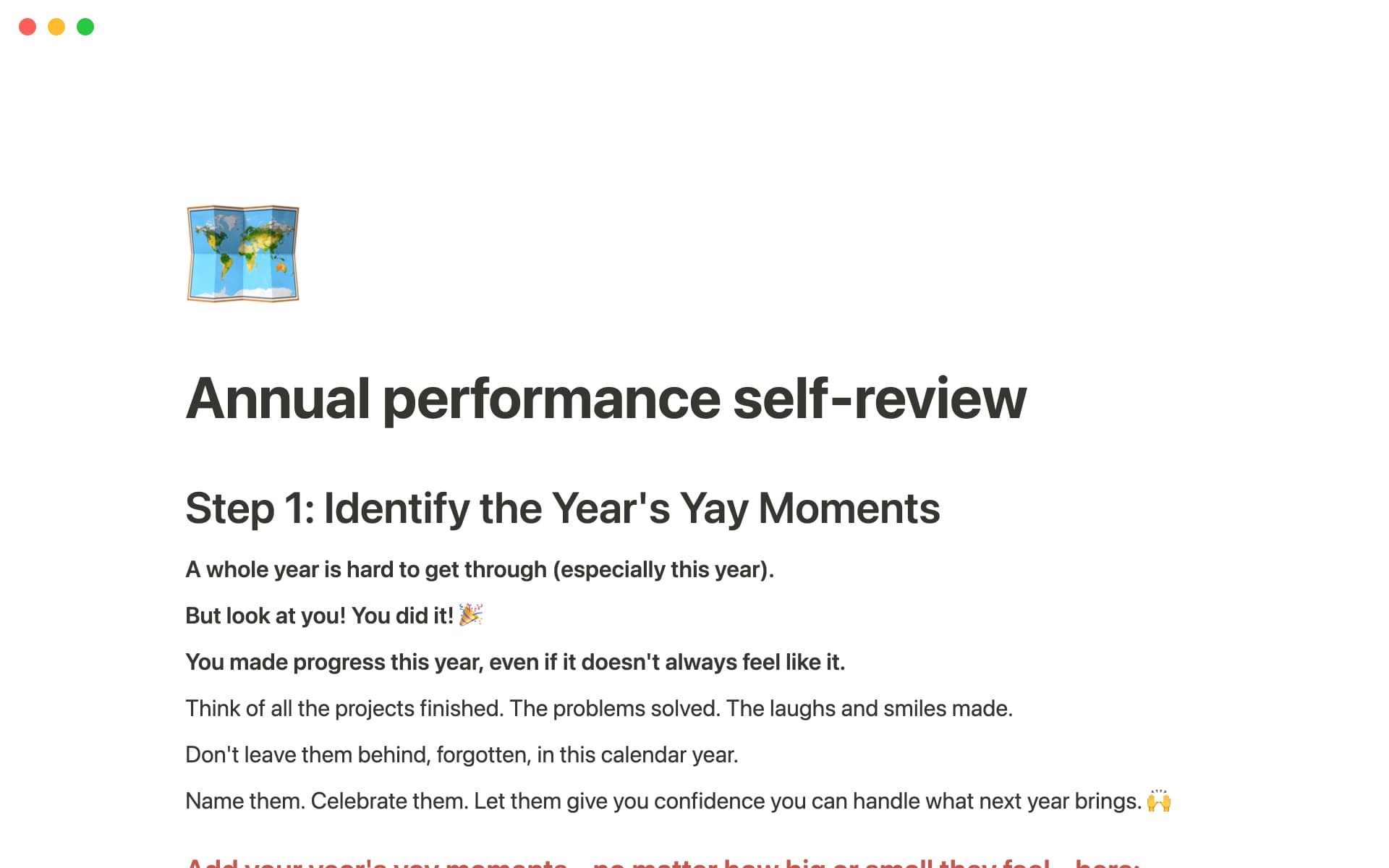
Performance reviews can be challenging, and sometimes, self-assessment can be even worse. But this annual performance self-assessment template provides some encouraging words to get started and prompts to dig deep and uncover what went well, what went poorly, and what you'd like to change in the future.
Additionally, it shares some helpful questions to ask yourself as you shift your mindset from the past to the future and what you wish to accomplish before your next performance review.
This is a personal development template, but managers could easily tweak the template to ask work-focused questions and encourage employees to self-reflect on their performance in the workplace.
5. Performance improvement plan
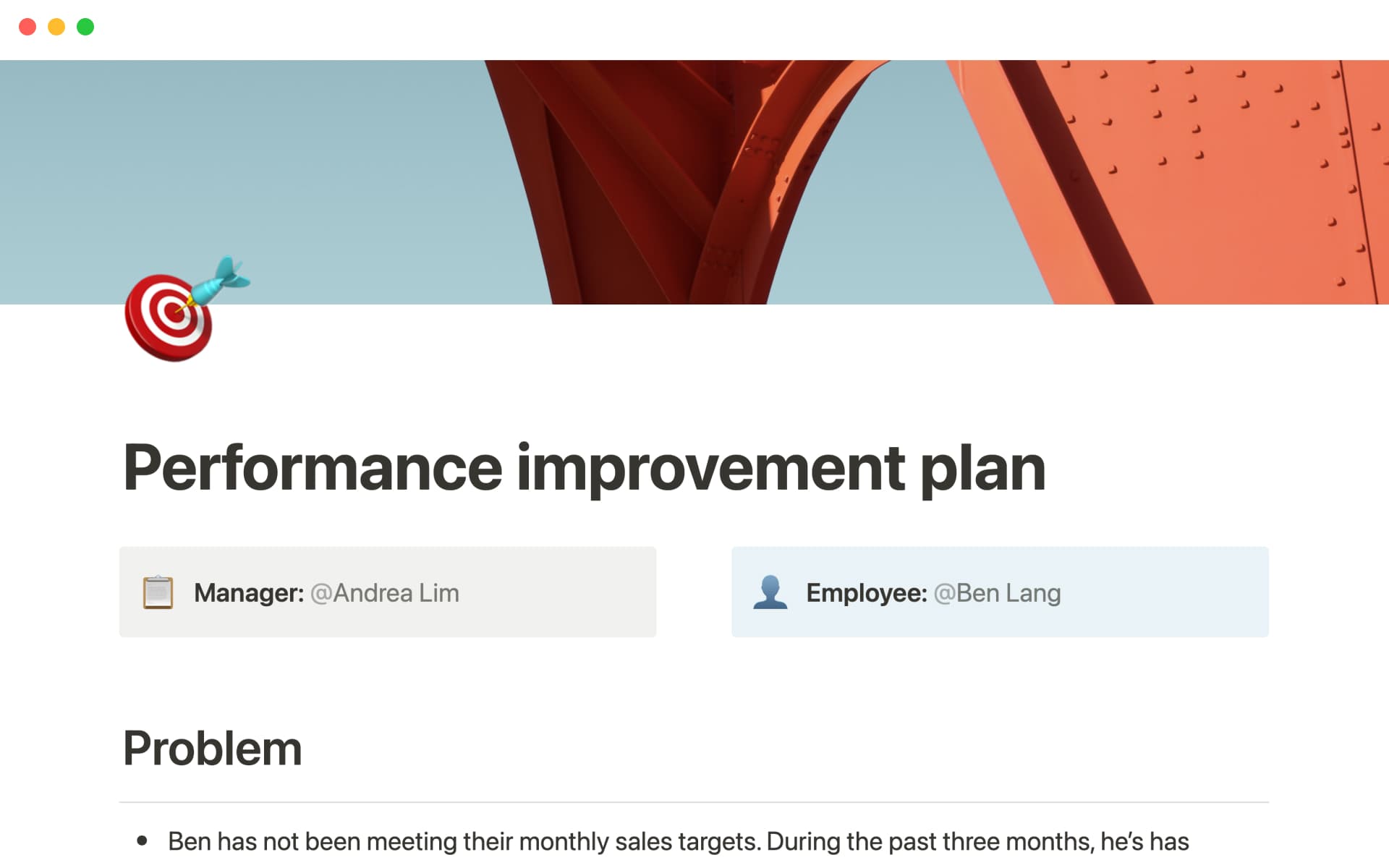
An inevitable — and uncomfortable — aspect of being a manager is figuring out how to deal with team members who are performing poorly. This performance improvement plan template removes some of the burden and could help improve employee retention. It provides a structured plan to help you outline the path to becoming a high-performing member of the workforce:
The problem
A proposed solution from leadership
Regular coaching and mentoring sessions
Performance feedback
Career goals for the team member
Resources to help them improve their skills
After filling out the template, you and your employee can review the content to get on the same page with how things will improve moving forward. Then, you can update the employee development plan template regularly to track measurable objectives, recording notes from check-ins and progress toward goals. Additionally, you can use the plan to help with succession planning if the employee must exit their current role.
6. Annual performance self-tracker
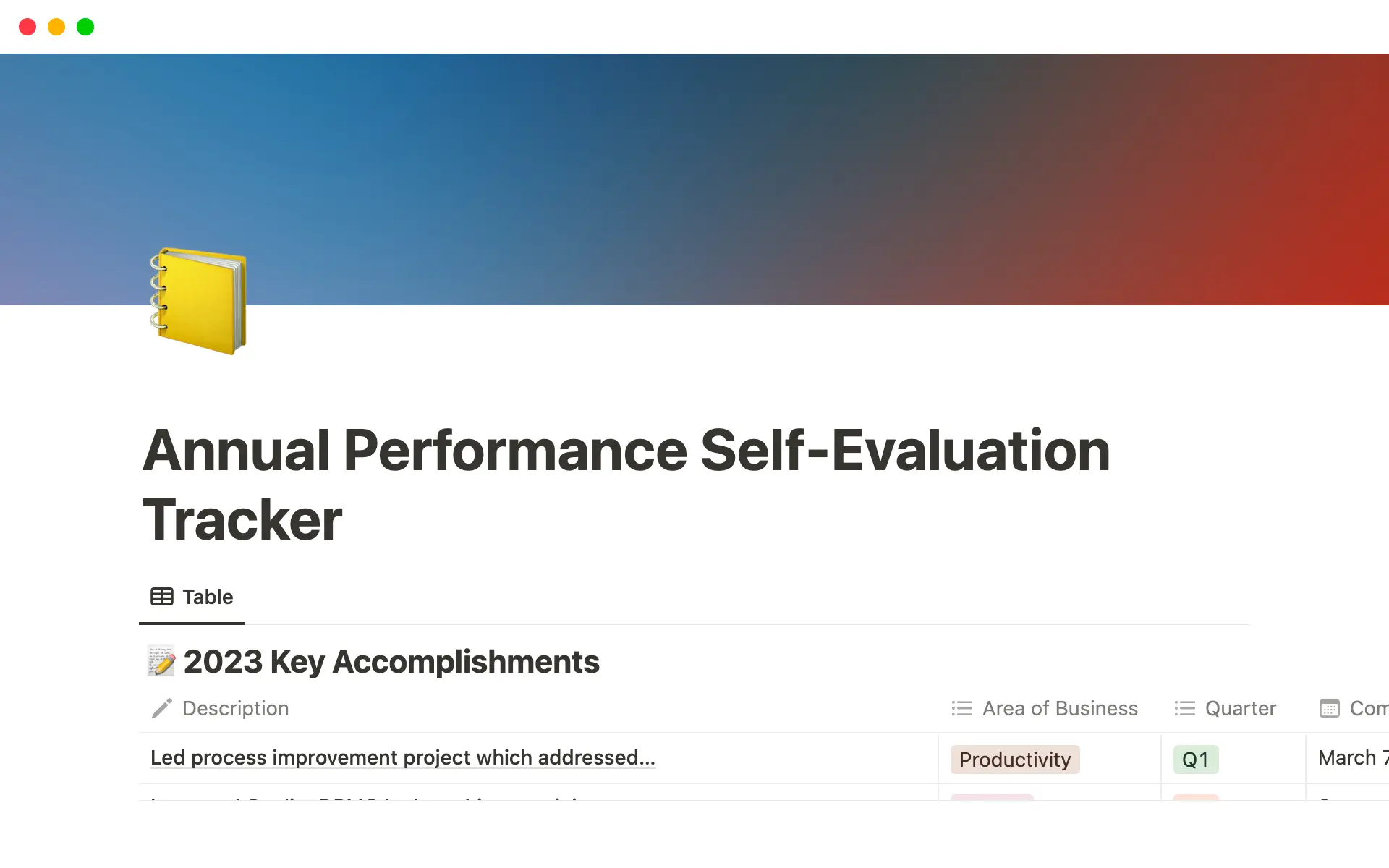
If you’re one of the many who never keeps their New Year’s resolutions, try to beat the odds with this annual performance self-tracker template. This is a great resource if your company doesn’t have a formal review process or you’re hoping to progress beyond your manager’s expectations this year.
This template provides an intuitive calendar to track completion dates, outcomes, and additional details about the goals you cross off the list. As you create project plans and work toward your personal development objectives, update your strengths, take note of growth ideas, and review progress. The template also updates with a new motivational quote daily to add extra pep to your step.
Grow personally and professionally with Notion
After reviewing these professional and individual development plan examples, you might be feeling ambitious and inspired. If you need extra help getting started with your upskilling, Notion offers multiple templates that improve productivity and help you collaborate with your team, manage projects, and more. Check out Notion’s template gallery to get started.


